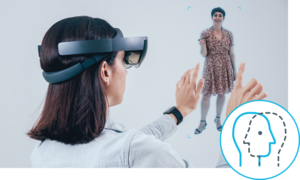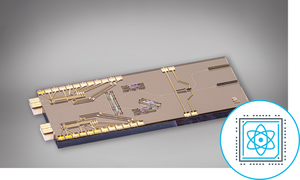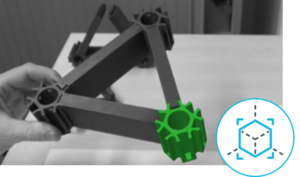Capturing and modeling real-world objects or processes in a digital twin enables the simulation, prediction and optimization of processes and the holistic analysis of objects, people and environments. Thus, it allows the extraction of information that is otherwise not directly measurable. Moreover, the feedback of digital information into the real world leads to novel assistance systems and automated decision support. With its diverse technological competencies, Fraunhofer HHI offers solutions and combines them in the business area Digital Twins.
Fraunhofer HHI Competencies

Digital twin of persons
- High-resolution human capture and modeling
- Capture and synthesis of 3D body motion and facial expression
- Learning characteristic motion patterns
- Video-based vital sign and multi-modal patient data analysis
- Medical image processing and multimodal image data fusion

Digital twin of environments, objects and infrastructures
- Application-specific integrated quantum photonic modules with broad spectral transparency
- Protocol-adapted integrated QKD transmitters and receivers
- Photonic integrated sources of single and entangled photons
- Room temperature capable single photon detectors
- Coherent receivers for CV-QKD
- Integration of nonlinear optical crystals and efficient pump light suppression

Digital twins for dynamic processes
- Capture and simulation of sound propagation
- Localization and modeling of heat losses in buildings
- Modeling of channel characteristics for wireless communication
- Multispectral plant analysis for agriculture
- Dispersion simulation of sound, heat and electromagnetic waves
Applications
Immersive media:
- Virtual humans for immersive media (film, games, VR/AR/XR)
- Telepresence, telecollaboration and e-learning systems
Industry 4.0:
- Automated monitoring and process modeling in manufacturing
- Augmented reality supported assistance systems in assembly and production
Medicine:
- Computer assisted surgery
- Digital representation of a patient for therapy and diagnosis
Construction 4.0:
- AI-based capturing and BIM modeling of buildings
- AR assistance to support and record construction processes
- Audiovisual illustration of noise control measures